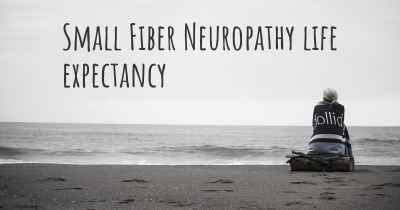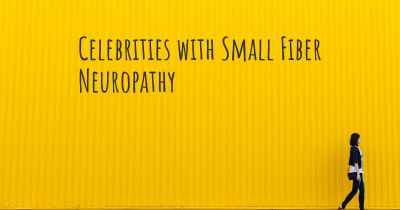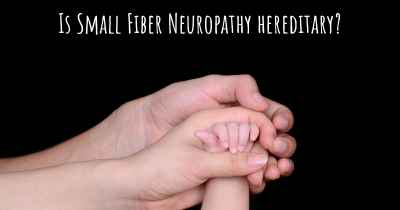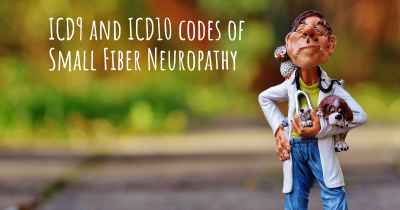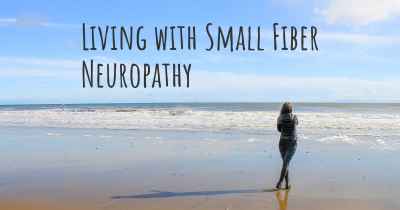Is it advisable to do exercise when affected by Small Fiber Neuropathy? Which activities would you suggest and how intense should they be?
See if it is advisable for people with Small Fiber Neuropathy to practice sports and which ones are the most recommended if you have Small Fiber Neuropathy
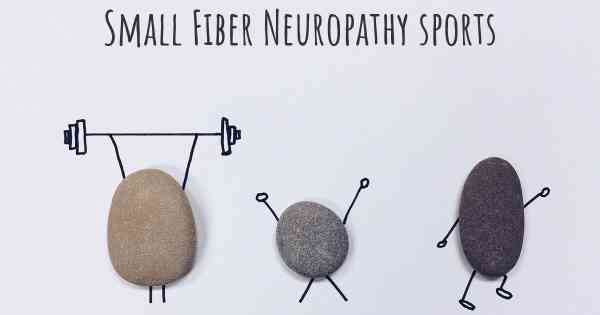
Is it advisable to do exercise when affected by Small Fiber Neuropathy?
Small Fiber Neuropathy (SFN) is a condition that affects the small nerve fibers in the peripheral nervous system. It can cause various symptoms such as pain, tingling, numbness, and sensitivity to touch or temperature. While exercise is generally beneficial for overall health and well-being, it is important to approach it with caution when dealing with SFN.
Benefits of Exercise for Small Fiber Neuropathy
Engaging in regular exercise can have several benefits for individuals with SFN:
- Pain management: Exercise can help reduce pain levels by releasing endorphins, which are natural painkillers produced by the body. It can also improve blood flow, which may alleviate symptoms associated with SFN.
- Mood enhancement: Physical activity has been shown to boost mood and reduce symptoms of depression and anxiety. This can be particularly beneficial for individuals with SFN, as chronic pain and discomfort can often lead to emotional distress.
- Improved cardiovascular health: Certain exercises, such as aerobic activities, can enhance cardiovascular fitness, which is important for overall health. SFN can sometimes be associated with other underlying conditions, such as diabetes, where cardiovascular health is crucial.
- Weight management: Regular exercise can help maintain a healthy weight or promote weight loss if necessary. This is important because excess weight can exacerbate symptoms of SFN and put additional strain on the affected nerves.
Choosing the Right Exercises
When considering exercise with SFN, it is essential to choose activities that minimize the risk of injury and exacerbating symptoms. Here are some recommendations:
- Low-impact exercises: Opt for activities that are gentle on the joints and nerves, such as walking, swimming, cycling, or using an elliptical machine. These exercises provide cardiovascular benefits without placing excessive stress on the body.
- Stretching and flexibility exercises: Incorporate stretching exercises into your routine to improve flexibility and range of motion. This can help alleviate muscle stiffness and reduce the risk of injury.
- Balance and coordination exercises: SFN can sometimes affect balance and coordination. Engaging in exercises that focus on balance, such as yoga or tai chi, can help improve stability and reduce the risk of falls.
- Strength training: Include light resistance training to maintain muscle strength and tone. However, it is crucial to use proper form and avoid overexertion, as excessive strain can worsen SFN symptoms.
Exercise Intensity and Duration
The intensity and duration of exercise should be tailored to individual capabilities and limitations. It is important to start slowly and gradually increase the intensity and duration of workouts over time. Here are some general guidelines:
- Begin with short sessions of exercise, such as 10-15 minutes, and gradually increase to 30 minutes or more, depending on your tolerance.
- Monitor your symptoms during and after exercise. If you experience increased pain or discomfort, it may be necessary to reduce the intensity or duration of your workouts.
- Listen to your body and take breaks as needed. Pushing through excessive pain or fatigue can potentially worsen SFN symptoms.
- Consult with a healthcare professional or physical therapist who can provide personalized guidance and recommendations based on your specific condition and needs.
Precautions and Considerations
Before starting any exercise program with SFN, it is important to consider the following precautions:
- Medical advice: Consult with your healthcare provider before beginning any exercise regimen, especially if you have any underlying medical conditions or concerns.
- Proper footwear: Wear supportive and well-fitting shoes to minimize the risk of foot injuries and discomfort.
- Temperature sensitivity: If you have temperature sensitivity due to SFN, be cautious when exercising in extreme heat or cold. Dress appropriately and consider indoor exercise options during extreme weather conditions.
- Hydration: Stay adequately hydrated before, during, and after exercise to support overall health and prevent complications.
- Gradual progression: Avoid sudden increases in exercise intensity or duration, as this can lead to overexertion and potential worsening of symptoms.
Conclusion
Engaging in regular exercise can be beneficial for individuals with Small Fiber Neuropathy. It can help manage pain, improve mood, enhance cardiovascular health, and support weight management. However, it is crucial to choose the right exercises, start slowly, and listen to your body. By taking necessary precautions and consulting with healthcare professionals, individuals with SFN can incorporate exercise into their routine to improve overall well-being.
YES! However - Stop before feeling worse! Exercise should keep you in bed for a week when you're done. Even if you can only walk for 5 minutes, that is OK! Every little bit will slowly help you in the long run. It will take time to get to where you would like to be, give it time. Each day if you can do even just a minute of bending/stretching/walking etc. it will add up and help you improve your goal. Helping your blood flow in general is a good thing - However, if you notice things getting worse - I mean considerably worse after an extremely short amount of time STOP and place that call into your dr. Do not force your self to overdo it - or make your self-worse than before.
Posted Sep 29, 2018 by Brian 1350
Posted Jul 12, 2021 by Jo 3150
IF you are unfortunate enough to live in a country who's health system is financially based, BEWARE of Physical Therapists.
I found for my pains, which are not my top complaints, that I had excellent results for most areas, almost all, via "Deep Tissue" Massage from an exceptional chiropractor who did labor intensive massage and one other massage therapist. Many times I found people who were PTs who did this work ONE DAY and then gave you a bunch of exercises to do and 100% of those made my motor nerve issue pain WORSE. The point was to do no work and get paid by my Medicaid insurance.
I can't afford the massage therapists because I am on Medicaid and not Medicare but that worked for me for most areas and most exercises that PTs gave me were COUNTER-productive. However, IF/when I am well enough to use SMOOTH MOTION MODERN gym machines at a gym, I can improve my strength and support muscles that would atrophy much faster. Unfortunately for me the year round flu symptoms limit my going to a gym but in a perfect world I would go 2x/week.
Most gyms are going to better and better quality motion machines and you only have to try them at the lowest or zero weight to see how it will feel and stretch you. In the USA Hammerstrength and Cybex are good examples and the cable types are poorer quality. In Europe the more expensive lines "Argento/Silver" of Technogym from Italia have most of the best machines but for shoulders and chest I would say PANATTA Sport were way better. You want the smoothest motion that builds muscle while not irritating any ligaments or nerves. Ideal gyms would have the best of each line but this is never the case. If you are well enough and have enough money and time, go to 2 or 3 gyms to get the best equipments for different muscle groups.
Consider that everyone's body is different so you have to try things to see what will work and most personal trainers at gyms know zilch about SFPN but may have heard of ASL, if they are informed.
To me it is clear what is exercising the muscles and growing them and what is irritating the nerves which can come in form of innocent stretching exercises since your PT does not have SFPN or even Fibromyalgia and in either case, does not live in your body. Pay close attention and reject anything that aggravates your nerves. In MY experience, the Physical Therapists do not listen or take this into consideration. If it makes you worse, don't do it.
I am going to leave my contact with a lot of caveats. I will respond to folks who are polite enough to write with a first, last name, location and share info about their SFPN or loved one's SFPN prior to questions. Think polite Victorian letters. MarkLazersonATLiveDotCom - Consider that I respond usually on the first part of the weekends, DEPENDING on weather changes and how miserable I am. I am not compatible with folks who use Zombie Phones or Social Media sites as I do not "text" and am emoji-free. Computer E-Mail is my level of comfort. Please think of me (2022) as 88, not 58 which is more accurate. I'm empathetic, direct, honest but also tactless at time and a bit of a curmudgeon. A little bit of Bert, a little bit of Ernie.
Posted Feb 3, 2022 by Mark 2000
